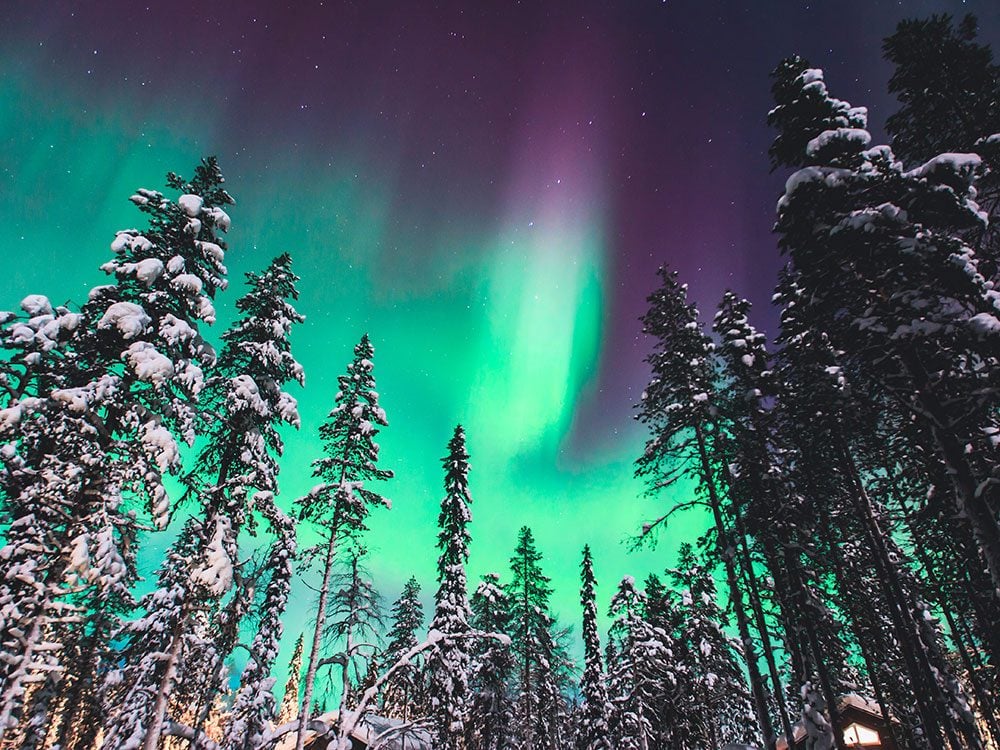
See the Northern Lights in Northwest Territories
My 10 previous attempts to see the aurora borealis yielded little but comments from locals that I should have seen them last week, or next week, or any week but this one. It didn’t stop me from joining an aurora-watching tour in Yellowknife, which sits under the northern auroral oval and is an ideal location for those chasing their first glimpse of nature’s fireworks. Whether you see a light show or leave disappointed is up to solar flares, weather and good fortune. On my last attempt, I finally discovered what all the fuss is about.
Check out this awe inspiring northern lights photography from across Canada.
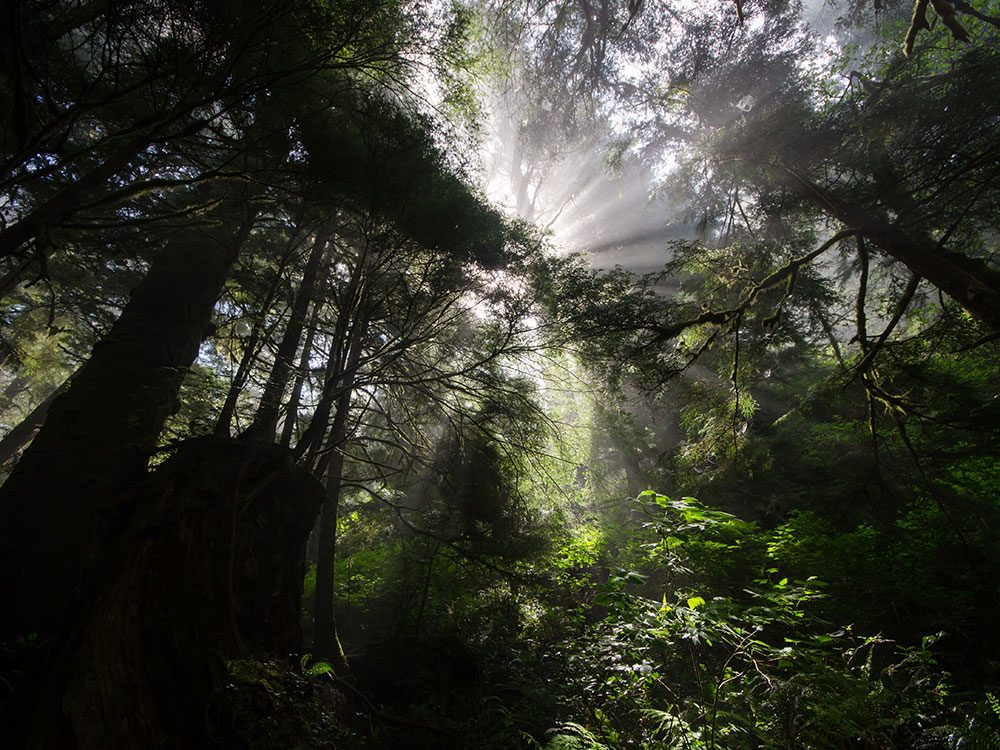
Hike the West Coast Trail in British Columbia
The 75-kilometre trail from Vancouver Island’s Pachena Bay near Bamfield to Gordon River near Port Renfrew is a physical challenge matched with stunning coastal wilderness. Along slippery boardwalks, up intimidating wooden ladders, across streams and sandy beaches, enjoyment of the West Coast Trail depends greatly on your luck with the weather. (Here’s the summer weather forecast across Canada.) Between 80 and 100 hikers are rescued each year after sustaining serious injuries. That doesn’t stop folks from snapping up the limited spots available. Once you’ve gazed into the tidal pools, showered under Tsusiat Falls, walked beneath old-growth trees and befriended fellow hikers around a driftwood campfire, the risks slip well beneath the reward.
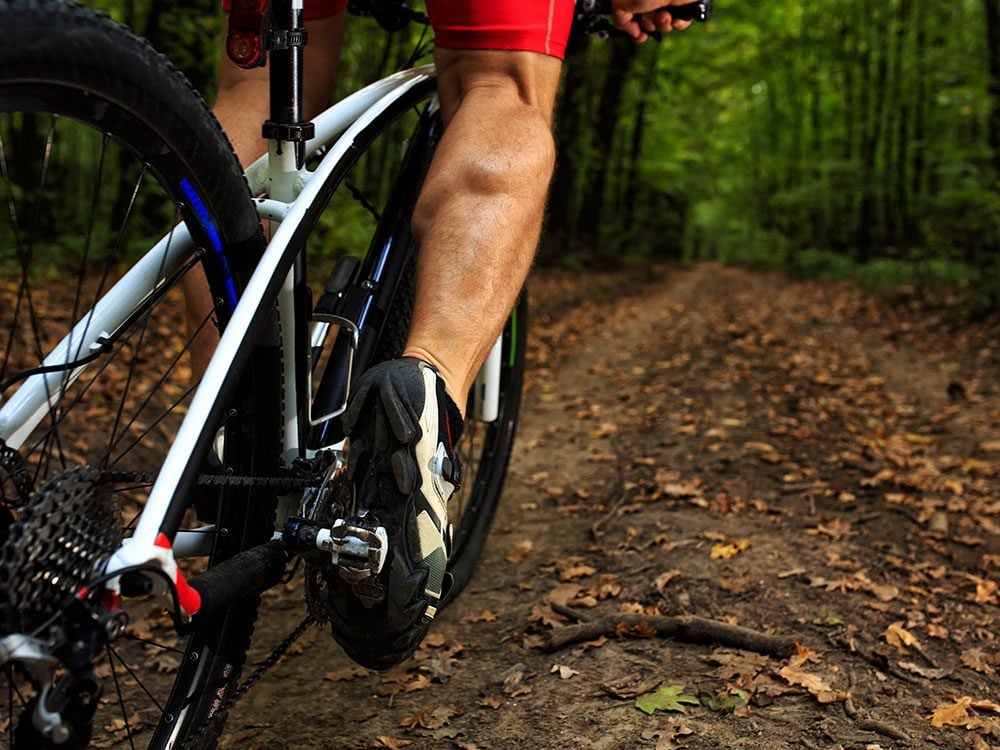
Ride the Burns Lake Mountain Bike Trails in British Columbia
British Columbia offers some of the world’s best mountain biking—Whistler, Fernie, Rossland, Vancouver’s North Shore—so why is the small town of Burns Lake on my list? It’s a biker’s dreamland built by the folks behind Whistler’s Bike Park. The upper slopes of Boer Mountain are clawed with twisting single-track dirt trails, challenging wooden ramps, berms, loops and switchbacks. Bikers are served by a shuttle service that runs to the top, and you’ll quickly discover that the trails benefit from Burns Lake’s welcoming community spirit.
Check out more esssential experiences in British Columbia.
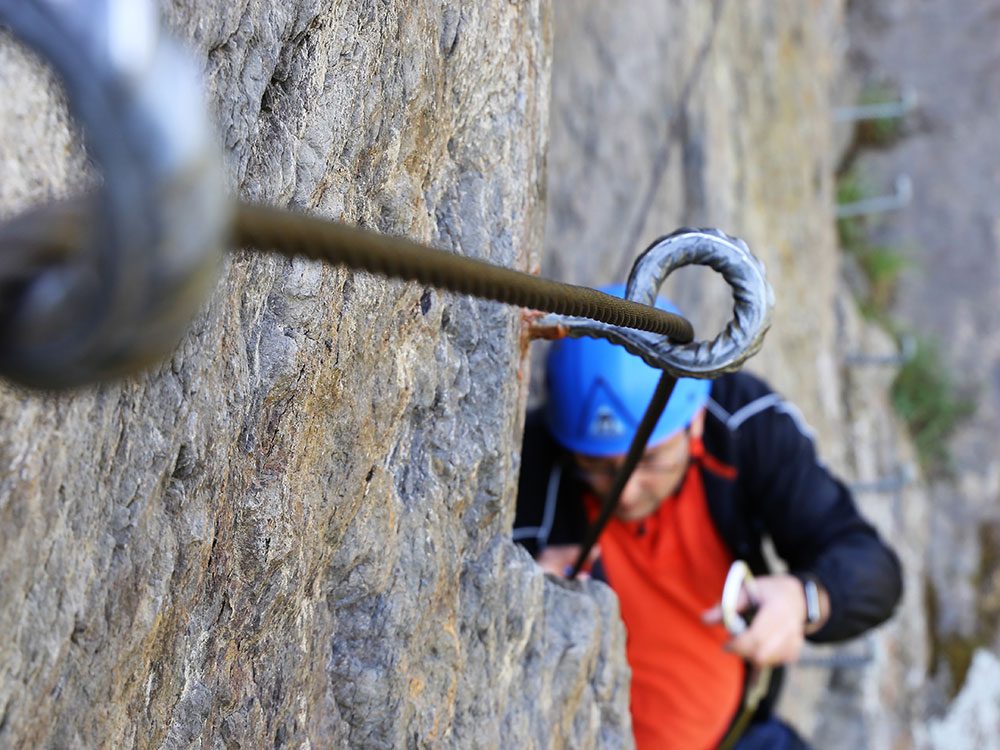
Try Via Ferrata in British Columbia
I once hiked a holy mountain in China with a “cliffside plank path”—20 centimetres of wood stapled to solid rock with a seemingly endless drop below. Fortunately, I was harnessed into a safety line—mountain climbing with training wheels. “Via ferrata” is the term for a clip-in trail that lets novices like me scale dramatic heights. A wire runs through iron rungs anchored into the rock, and with the aid of harnesses and carabiners, climbers can experience mountain thrills without the perils. In British Columbia, Great Canadian Trails operates spectacular via ferratas, including the Skyladder and Mount Nimbus.
There’s more than one way to enjoy the wonders of the Canadian Rockies, of course. Here’s what it’s like travelling onboard Rocky Mountaineer.
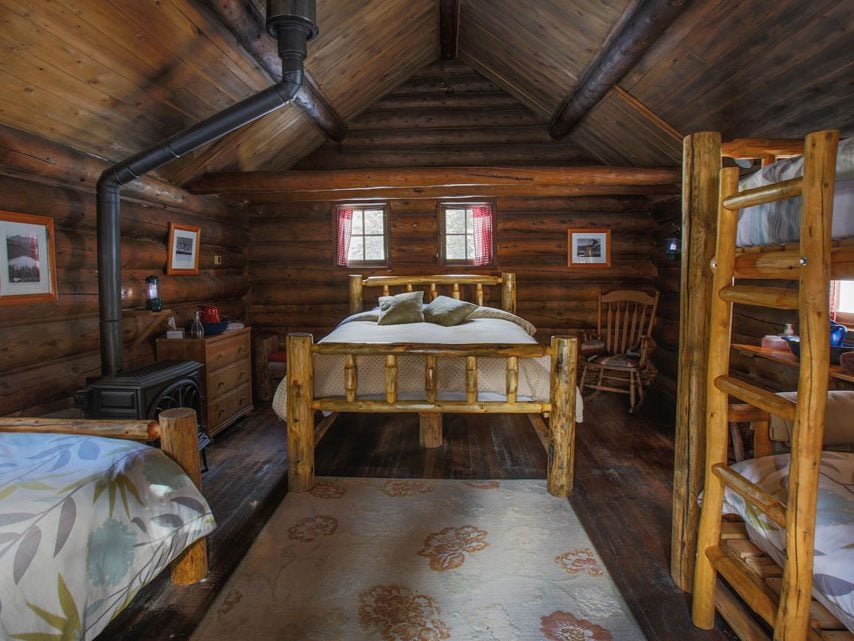
Rough it at Skoki Lodge in Alberta
Western Canada’s oldest backcountry lodge has no running water, no electricity, no flush toilets and no cellphone service. Hikers and cross-country skiers must conquer an 11-kilometre trek, including the aptly named Deception Pass, before they can collapse around the fireplace with a cup of soup. Since its construction in the 1930s, Skoki has been an escape for everyone from families to honeymooners, including the Duke and Duchess of Cambridge, William and Kate, who selected Skoki for their solitary night off during their 2011 Canadian visit. The Lake Louise Ski Resort helicoptered in a fully equipped bathroom for the royal lovebirds, which Skoki quickly dismantled once they left. While the meals are outstanding and the beds comfortable, Skoki is an escape to the mountains of yesteryear, where modern inconveniences are well worth paying for.
Check out more Canadian hotels that have hosted royal guests.
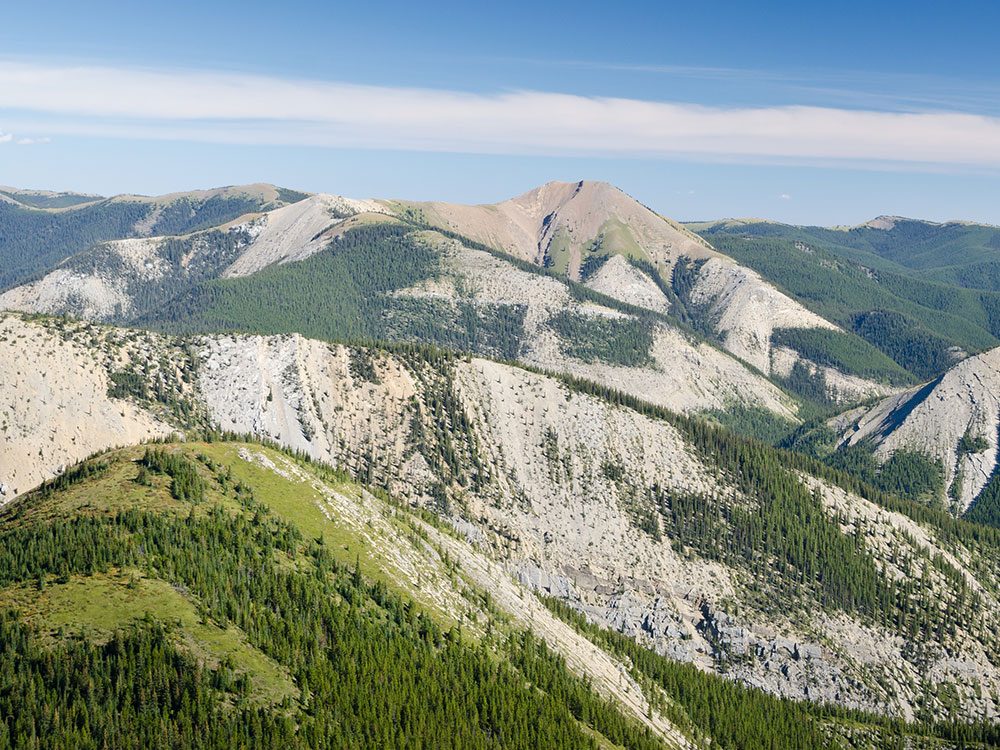
Hike the Skyline Trail in Alberta
Widely regarded as the best hike in the Rockies, over half of Jasper National Park’s 44-kilometre Skyline Trail is above the treeline. Expect spectacular views as you cut across ridges overlooking crystal lakes. It also means greater exposure to the elements, particularly along the Notch—the highest point on the trail—where strong winds and whipping rain can make life particularly miserable. (When in doubt, channel Frodo—he always kept going.) Depending on your level of fitness and determination, the Skyline Trail can be completed in two to six days, with excellent campsites along the way. Booking ahead is essential.
These incredible photos will have you packing your bags for Jasper Park Lodge.
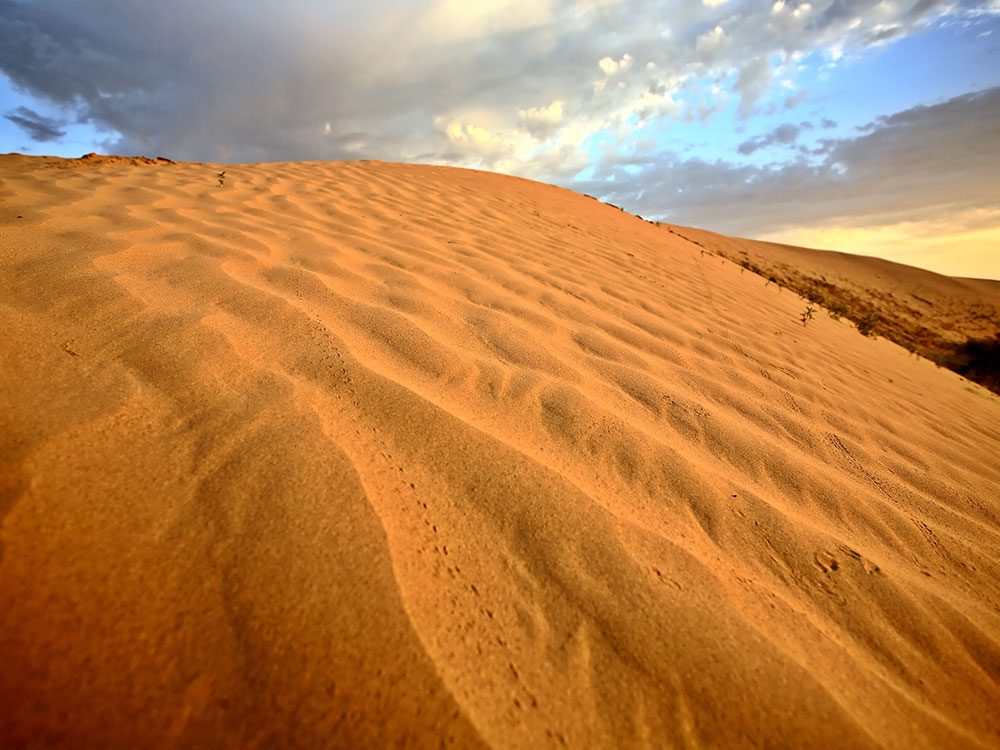
Explore the Athabasca Sand Dunes in Saskatchewan
Retreating glaciers have blessed Canada with some unusual natural phenomena: the Bay of Fundy, Gros Morne’s freshwater fjord, and these striking dunes in northern Saskatchewan. Swept across 100 kilometres on the southern edge of Lake Athabasca, Athabasca Sand Dunes Provincial Park looks like the Kalahari has relocated to the boreal forests of Canada. Ranging from 400 to 1,500 metres in length, the world’s most northerly dunes can reach 30 metres high. The park can be accessed only via float plane and boat, and it contains six sparse campgrounds. Hiking to the William River dune fields, you’d think you were alone on another planet, give or take a million mosquitoes.
Here are more unknown Canadian attractions that are well worth visiting.
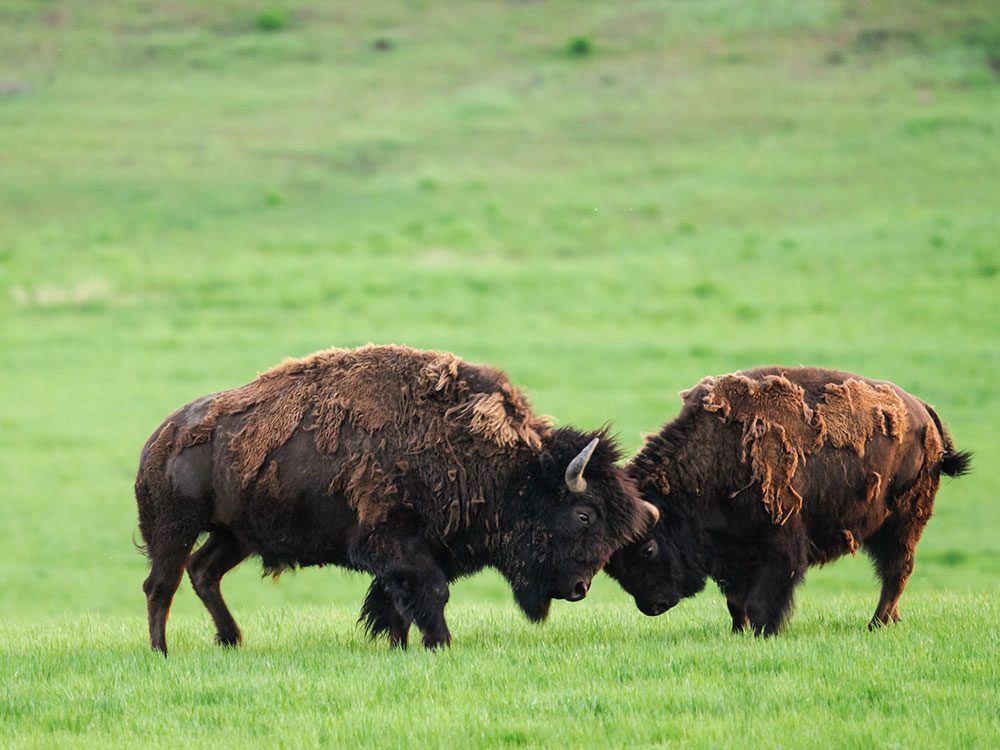
Horseback Ride With Wild Bison in Saskatchewan
I’ve ridden horses on the plains of Mongolia, in the deserts of Jordan, through the meadows of Slovenia and film locations in New Zealand. My Canadian horse adventure had to measure up, which is how I found myself in Prince Albert National Park, stalking bison. Horses are less likely to spook animals, which is why we almost trod on a bear on our way to Sturgeon River Ranch‘s rustic overnight teepee. Riding single file through forests of Jack pine and aspen, my horse detected wildlife long before I did, finding the best views of Canada’s only wild herd of plains bison roaming within their historic range.
Check out this gorgeous gallery celebrating the wildlife of Prince Albert National Park.
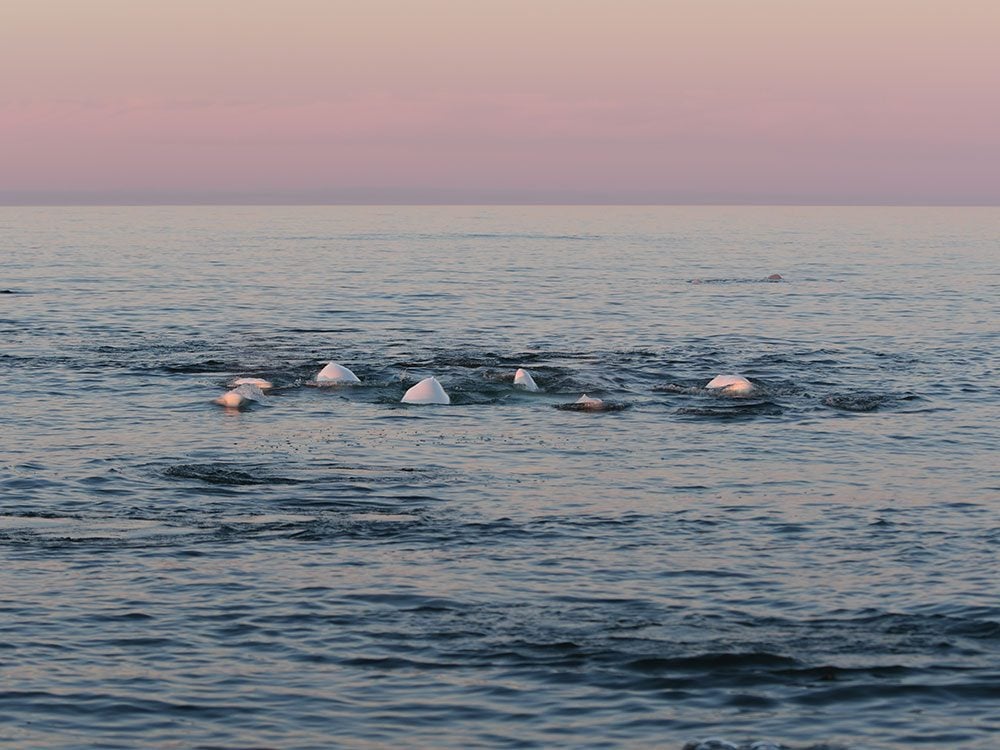
Snorkel With Belugas in Manitoba
Thank two large animals for putting Churchill, Manitoba, on the map: one of the most southerly populations of polar bears in the winter, and in summer, the thousands of beluga whales that gather where the Churchill River pours into Hudson Bay. Donning cold-water wetsuits, head into the bay on a Zodiac and look for a group of whales. Fins, heads, humps and tails will be everywhere. With their doe eyes and flexible necks, belugas seem particularly friendly and curious.
Read the incredible story of how one man travelled 1,250 kilometres from Lake Superior to Manitoba—by canoe.
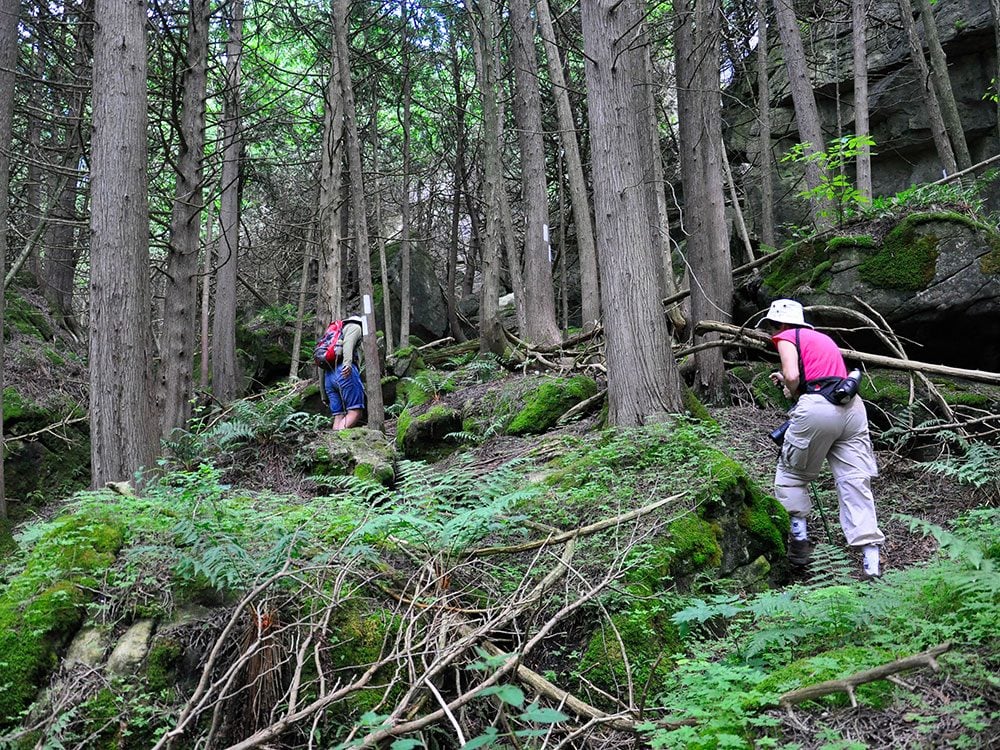
Trek the Bruce Trail in Ontario
Realistically, few people are going to complete the entire 885-kilometre Bruce Trail in one shot. Who has the time or stamina to spend a full month hiking 30 kilometres a day? Snaking along the Niagara Escarpment through Bruce County, Canada’s oldest walking trail is a challenge best experienced in stages. The escarpment’s dolostone cliffs, waterfalls and creeks offer plenty of eye candy. (Don’t miss the 10 most beautiful waterfalls in Canada.) Day hikers might start with the Walter’s Fall Loop or stroll to the Devil’s Monument in Dyer’s Bay. Other highlights include the 2.5-kilometre Rockway Falls Trail southwest of St. Catharines and hiking to the Hoffman Lime Kiln found on the Forks of the Credit, near Belfountain.
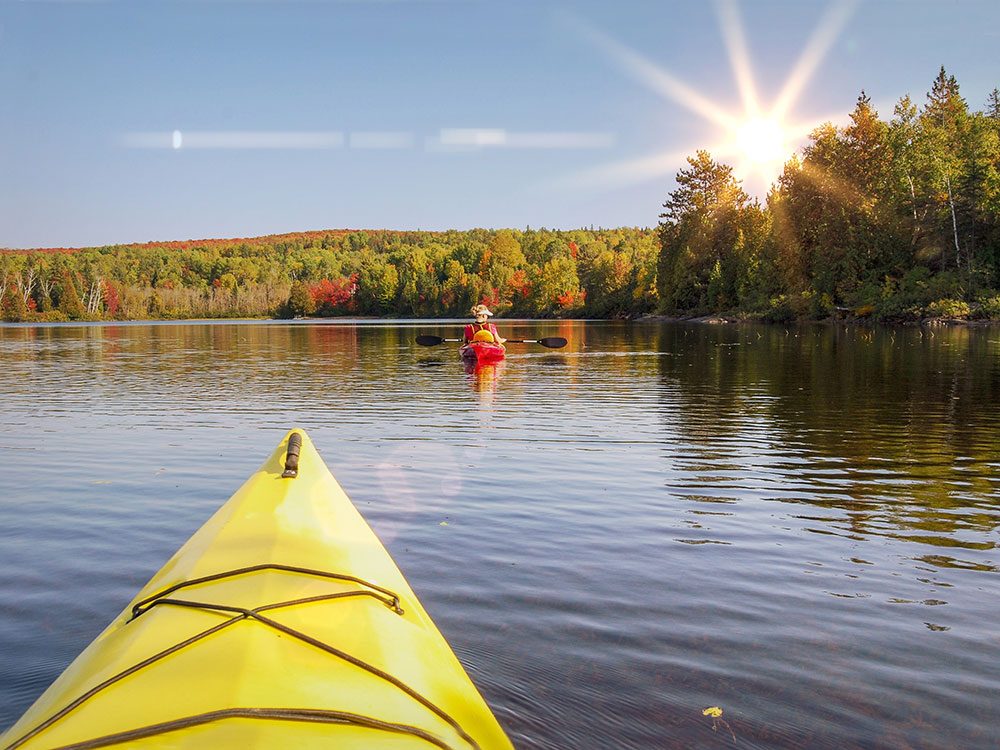
Howl at the Wolves in Ontario
Each Thursday in August and September until Labour Day, Algonquin Provincial Park hosts an unusual concert. Hundreds of cars line the side of the road for a public wolf howl. After a presentation about the wild eastern wolves found in the park, naturalist staff lead the procession to a location with the best chance of response, instructing participants in the art of wolf howling. The park staff call, the wolves howl back. Wind, rain and other factors can dampen the evening, but listening to people howling into the Algonquin darkness is worth the (free) admission. Arrive early, dress warmly and make sure your gas tank is full.
Check out the 10 most essential Canadian road trips.
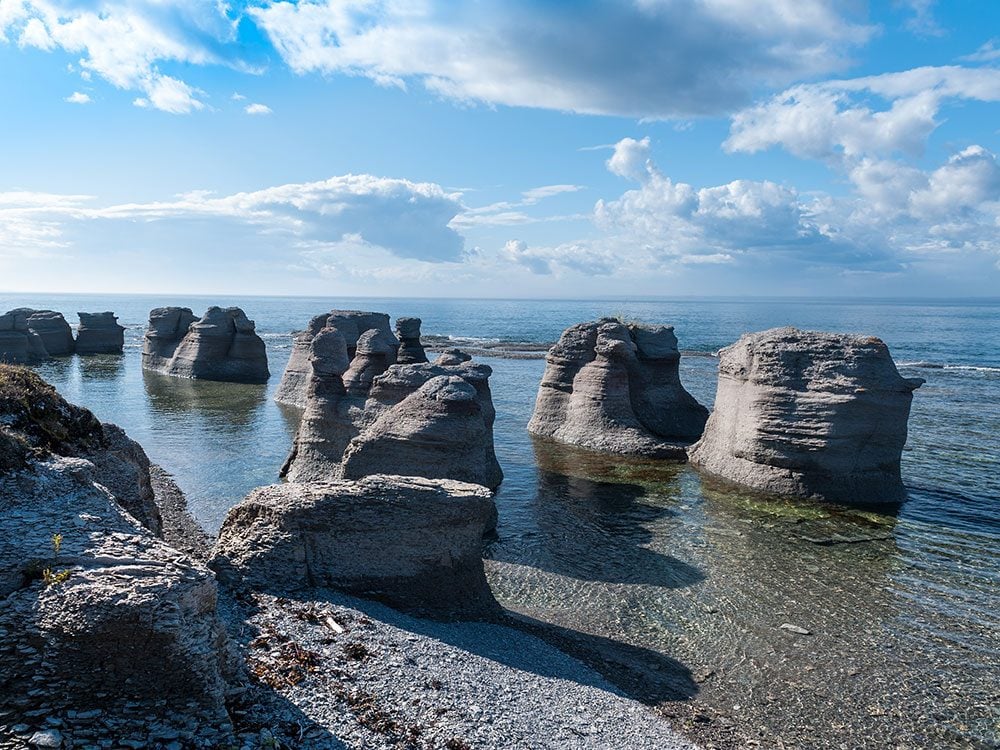
Wander the Mingan Archipelago in Québec
In the Mingan Archipelago National Park Reserve, glaciers, winds, waves and other erosive forces have created the largest concentration of monoliths in the country. Almost 1,000 islands and islets are scattered across the coastline, shaped into festooned cliffs, caves, arches and rocky sentinels. Explore them by kayak or, for the less adventurous, with a boat tour departing from one of the towns on the north shore of the St. Lawrence River.
Don’t miss the haunting story of the lost villages of the St. Lawrence River.
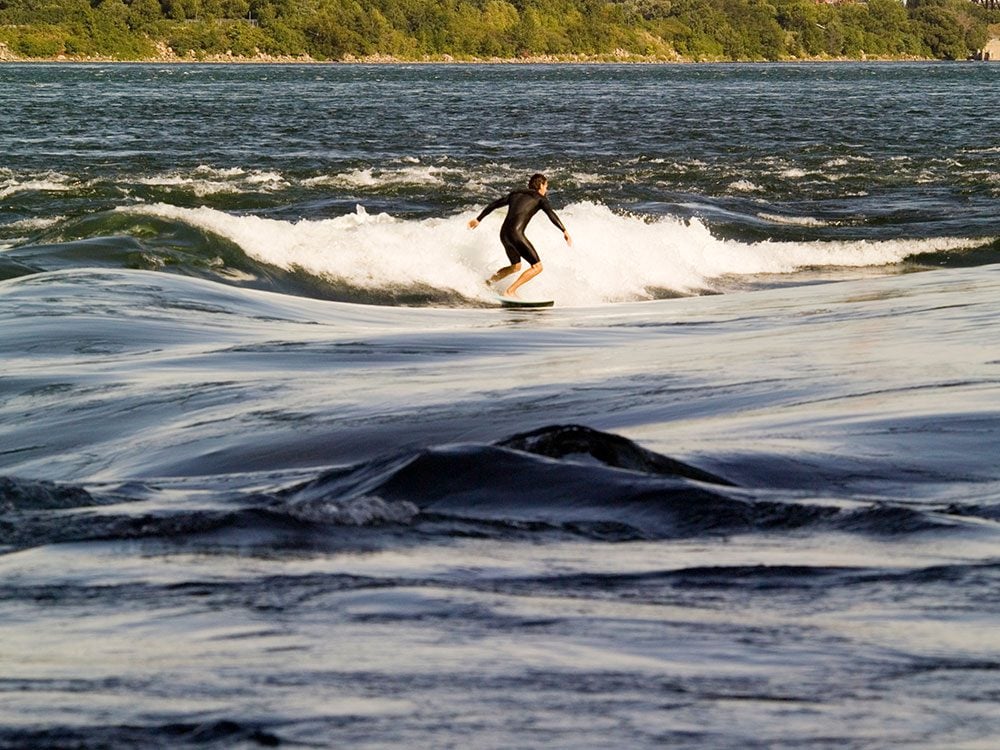
River Surf Near Habitat 67 in Québec
What Canadian surf lacks in weather and waves, it makes up in creativity. Advances in wetsuit technology make the waves of British Columbia’s Tofino and Nova Scotia’s Lawrencetown more manageable. Those seeking a consistent wave close to the amenities of a major city should look no further than Montreal’s Habitat 67. Located near the iconic building, the St. Lawrence’s Lachine Rapids reach as high as two metres, creating one of the world’s largest standing waves.
Speaking of Habitat 67, here’s the most famous house in every province.
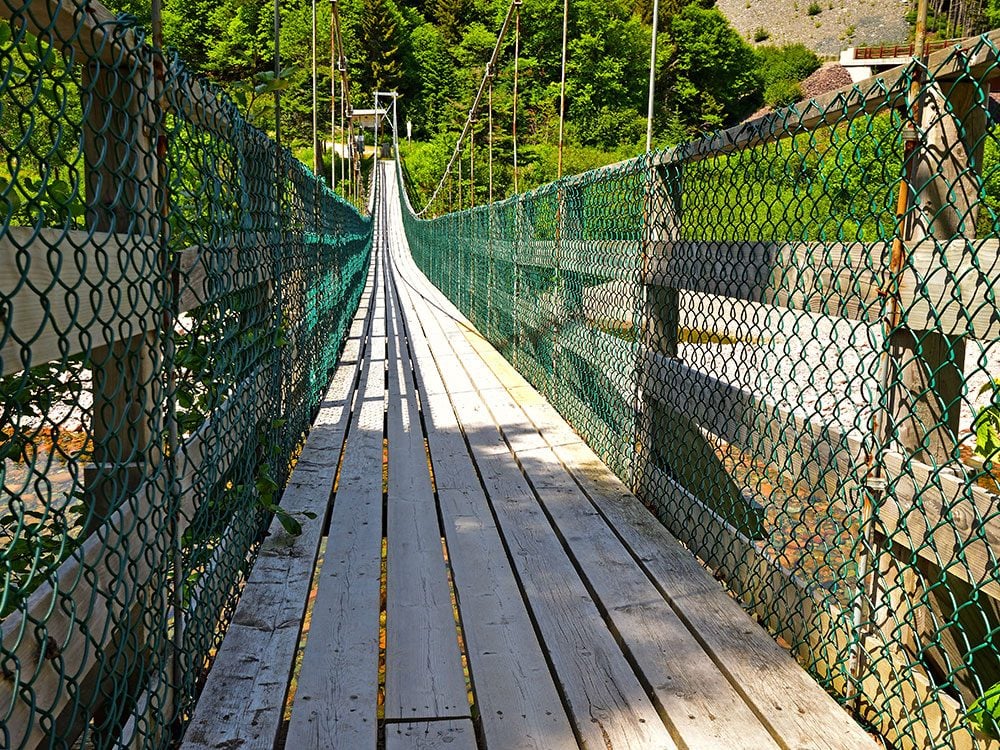
Hike the Fundy Footpath in New Brunswick
East Coast hikers in search of a rugged challenge must consider this 49-kilometre trail through backcountry wilderness along the Bay of Fundy coastline. The trail ends at the suspension bridge at Big Salmon River, part of the Fundy Trail Parkway. Trekking alongside 100-metre cliffs, across tidal rivers and through forests of red spruce, balsam fir, yellow birch and maple trees, the footpath provides a test for your backcountry skills. Budget four to five days, and keep your tide chart handy.
Read about one couple’s unforgettable experience following the Fundy Trail.
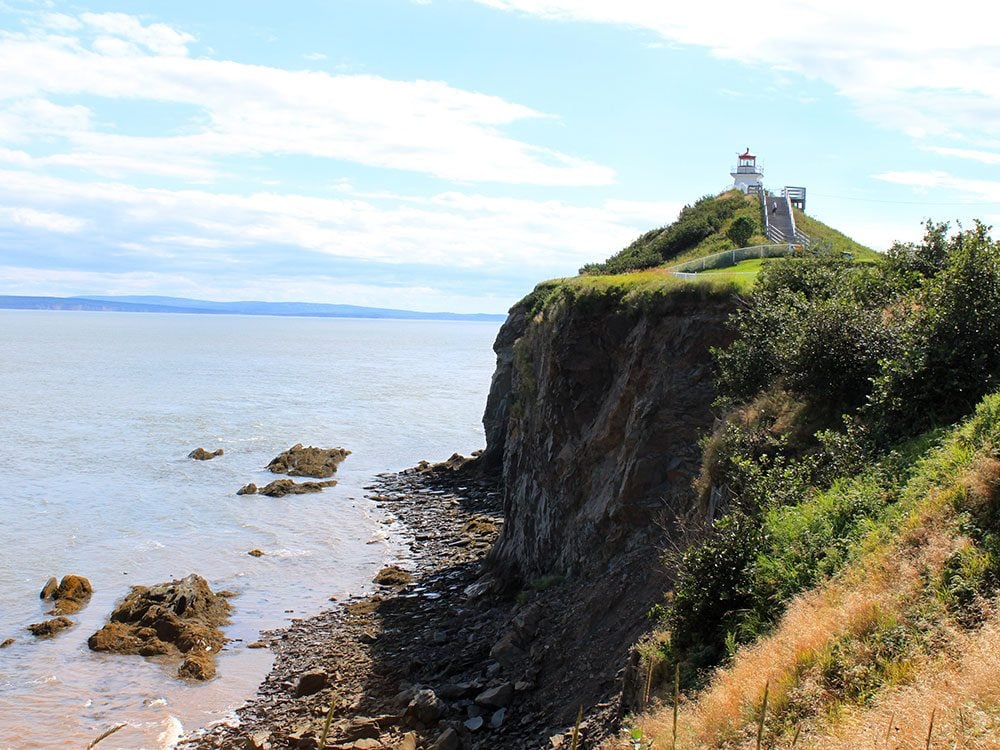
Rappel at Cape Enrage in New Brunswick
Cape Enrage earned its name from Acadian sailors who christened the 50-metre-high cliffs that loom over the raging Bay of Fundy below. When its lighthouse was automated in the 1980s, a Moncton schoolteacher and a group of students decided to save the cape, restoring its old buildings and constructing an interpretive centre, and offering rappelling, zip-lining and rock climbing adventures. The view of the Bay of Fundy from a rope perch dangling halfway down the cliff face is spectacular.
For more authentic Acadian experiences, check out Nova Scotia’s Evangeline Trail.
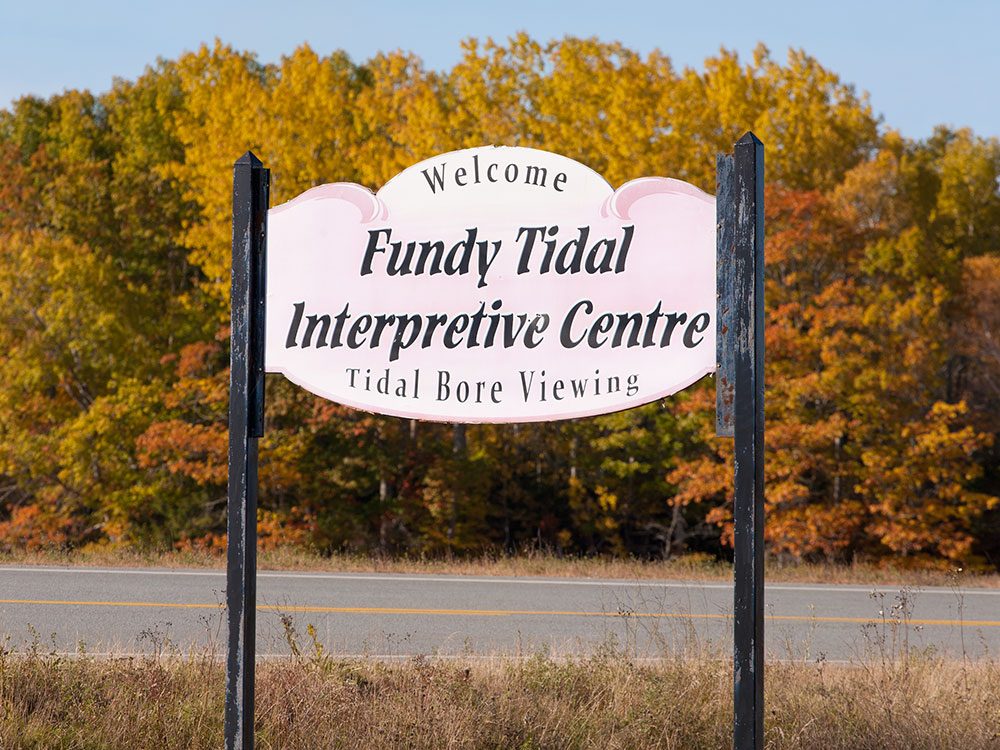
Raft a Tidal Bore in Nova Scotia
When the Shubenacadie, Nova Scotia’s longest river, encounters water rushing in from the Bay of Fundy, the phenomenon is known as a tidal bore. The leading wave swallows the sandbars, creating intense rapids in its wake. Once a day, rafting companies take clients into the action, where you’ll ride waves as high as four metres.
Don’t miss these other essential east coast experiences.
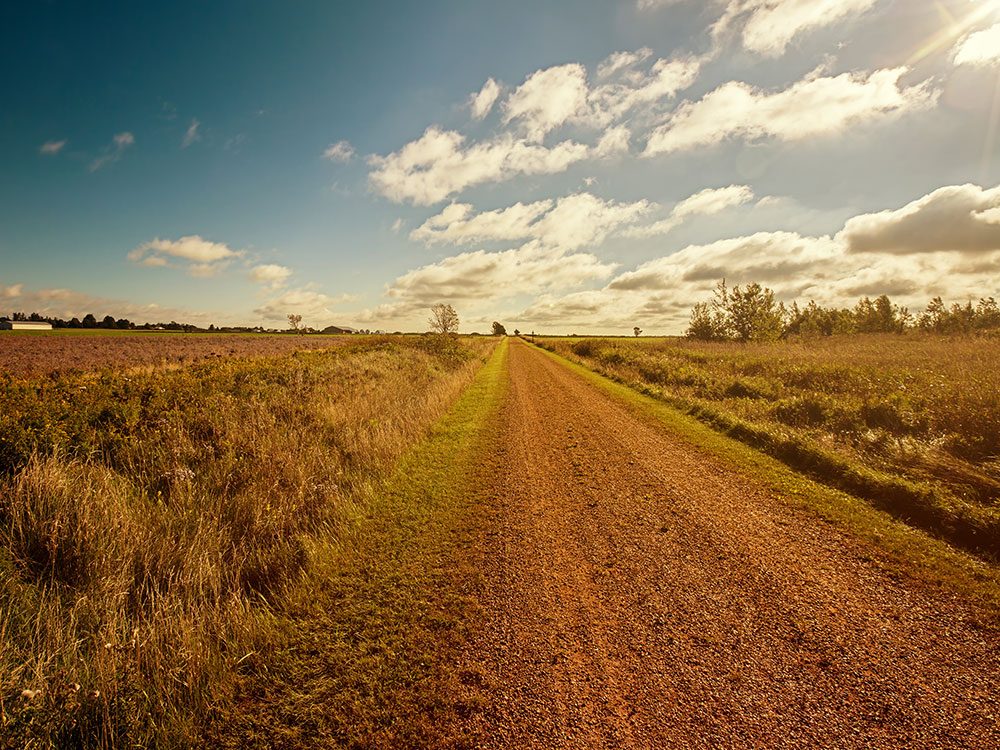
Walk the Confederation Trail on Prince Edward Island
When the Canadian National Railway abandoned its lines across the country’s smallest province, it left the skeleton for a tip-to-tip recreational trail that any hiker, cyclist, snowmobiler or cross-country skier will appreciate. The provincial government has been restoring the trail in stages, starting with the 279-kilometre main trail from Tignish to Elmira. In summer, hop on a bike and enjoy a car-free ride through small villages and island scenery. Local tour operators offer luggage-transfer services and bike rentals. With no grades, it’s a gentle cycling adventure.
Check out this stunning photography from a once-in-a-lifetime cross-Canada trek.
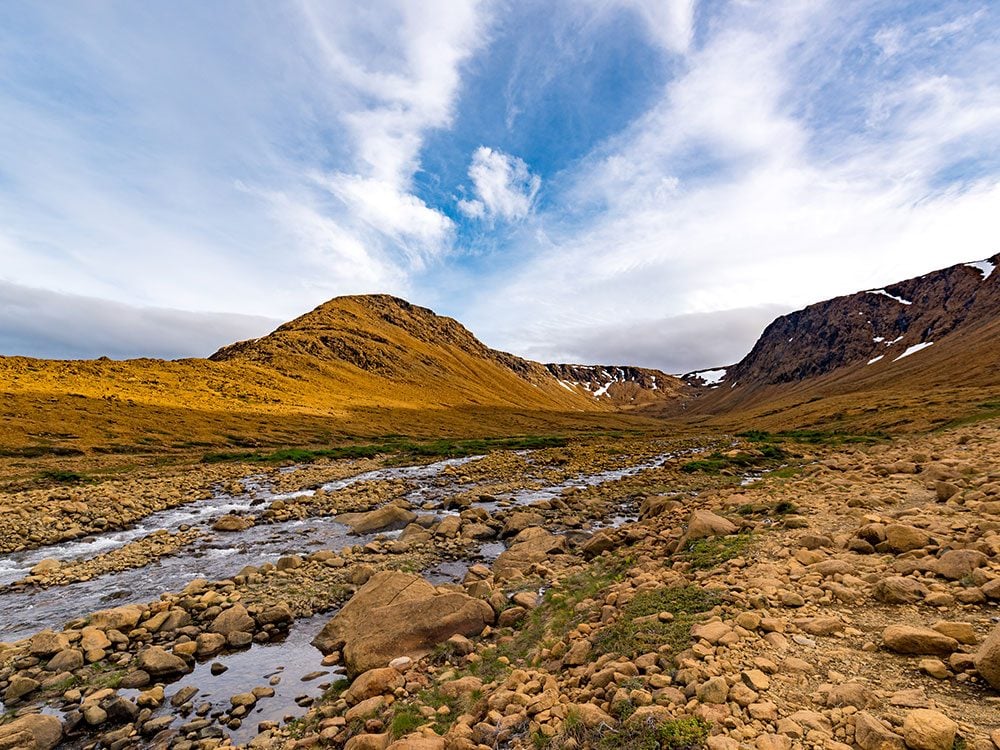
Hike the Tablelands of Gros Morne in Newfoundland
Hiking the desolate Tablelands of Gros Morne National Park, a moonscape formed by nearly 500 million years of continental drift, is spectacular. The rocks on this trail, once part of an ancient seabed, tell the remarkable story of our planet’s forces: the tectonic plates that slammed into each other, creating our continents. A gentle four-kilometre, one-hour return hike traverses an alien landscape with rare plants and age-old minerals. The rust-coloured Tablelands are an underrated geological marvel.
Here are 50 of the most gorgeous parks across Canada.
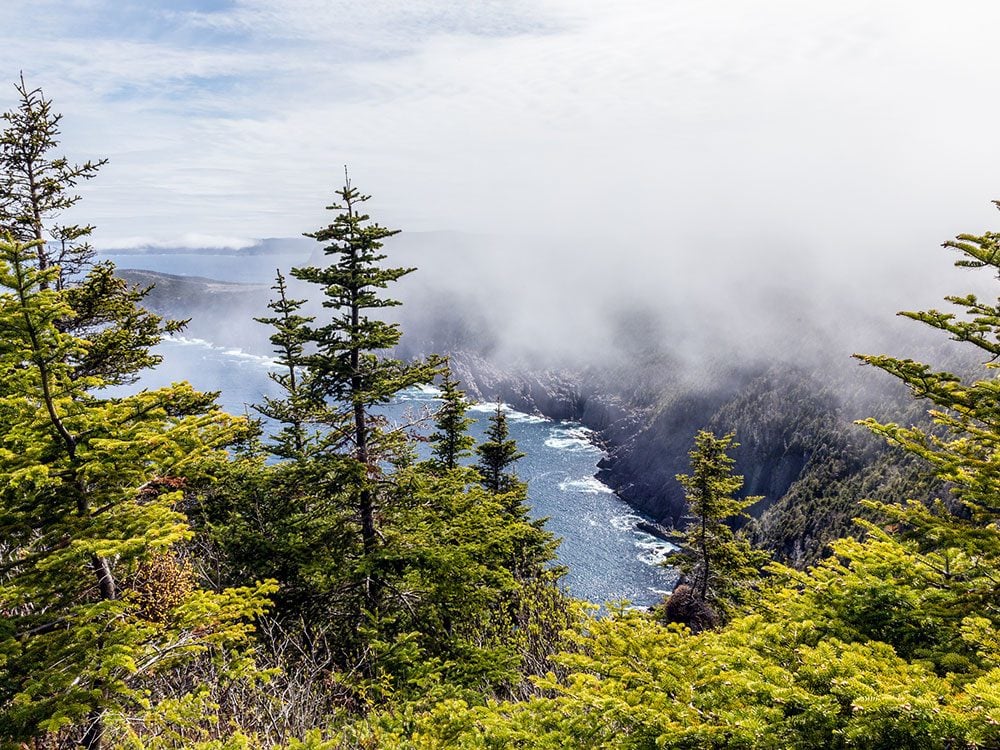
Trek the East Coast Trail in Newfoundland
Think the West Coast Trail is epic? The East Coast Trail along Newfoundland’s Avalon Peninsula will give you all the space you could possibly need. Expect fjords, cliffs, sea stacks, smashing waves and dense forest as you walk alongside migrating whales and seabirds. If the open space becomes overwhelming, pop into one of the 32 lively coastal communities linked by the trail.
Need more reason to visit the Rock? This love letter to Newfoundland should convince you.
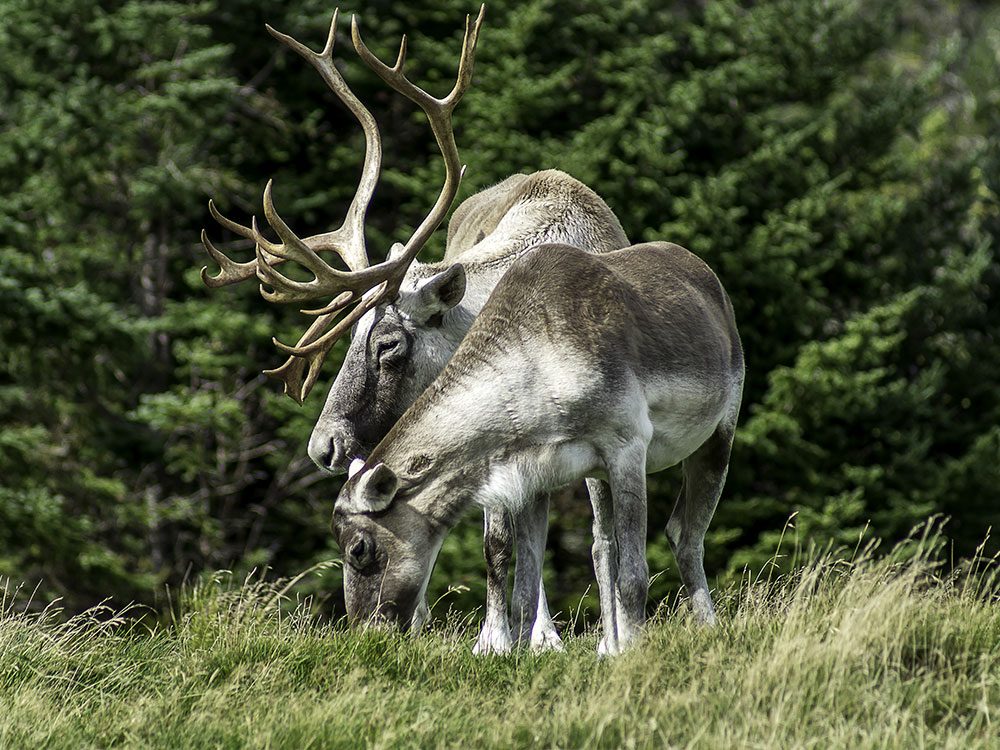
See a Caribou Migration in Newfoundland
It’s neither easy nor cheap to witness one of the planet’s great mammal migrations: the countless herds of barren-ground caribou that cross the remote tundra and taiga of Labrador, Nunavut and northern Quebec. Each summer, photographers, tourists and hunters pay top dollar to backcountry guides and outfitters to get close to the movement. Unfortunately, the future of Labrador’s George River herd is uncertain, with numbers down 70 per cent since 2010. Still, witnessing thousands of caribou in one place is one for the bucket list and hopefully will remain so.
Here are more super-sized attractions across Canada.
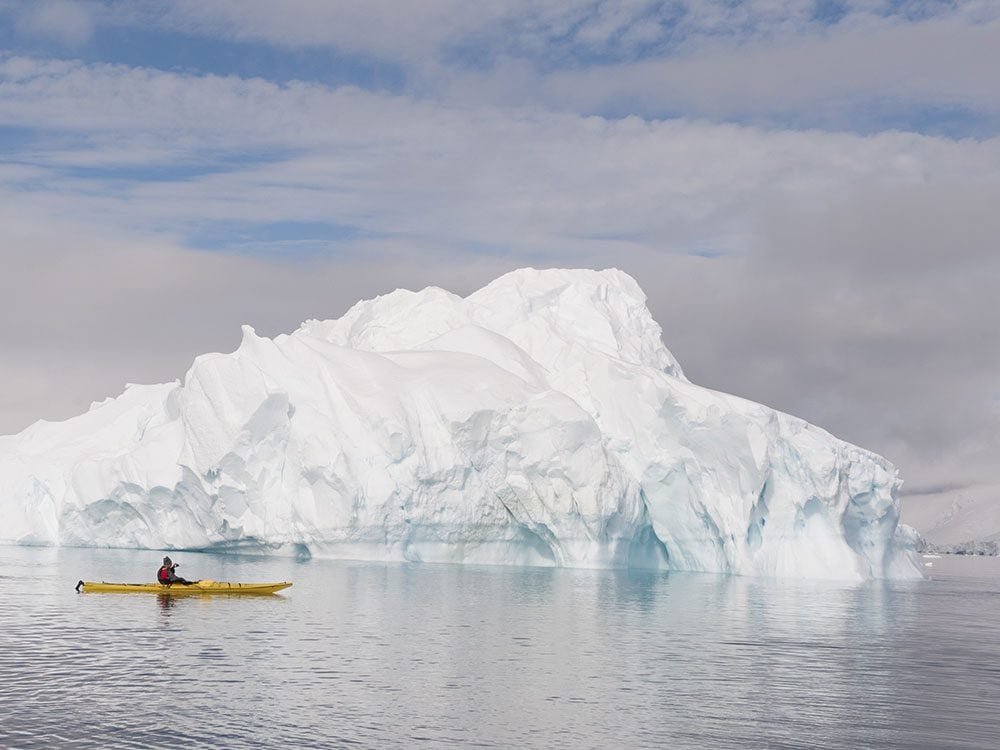
Kayak With Icebergs in Newfoundland
In Twillingate, icebergs are treated like visiting house guests. Locals discuss their habits and behaviours and how long they may or may not stick around. Watching 10,000-year-old ice smash into the coastline is impressive on land, and even more so from the water. Considering that 90 per cent of an iceberg is underwater, you’ll want to keep your distance as you paddle around bergs that can reach 15 storeys. Veteran kayakers will remind you to always watch where you’re going and stay well clear of floating “bergy bits”—they’re as tough as concrete.
Test your knowledge of Canadian slang with our new Word Power quiz.
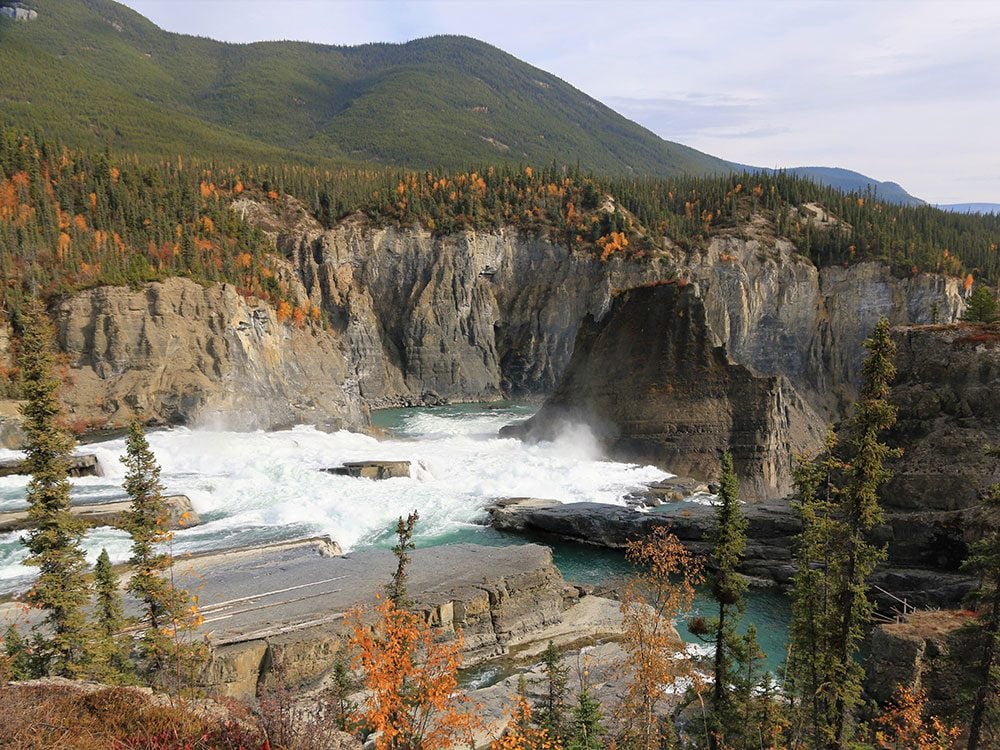
Raft the Nahanni in Northwest Territories
These adventures usually start at a waterfall twice the height of Niagara Falls, and they only get better from there. Five hundred kilometres of pristine northern wilderness await as you float down-current between 1,400-metre-high canyons, boreal forest and snaking waterways. Nahanni‘s reputation for wild adventure is reflected in the names you’ll encounter along the way: Hell’s Gate, Funeral Range and Headless Creek, where the decapitated remains of two prospectors were found in 1908. Rafting operators ensure today’s adventure is less risky, but the endless panoramas are just as untamed as they’ve always been.
If you think “Headless Creek” sounds wild, check out these 50 quirky place names across Canada.
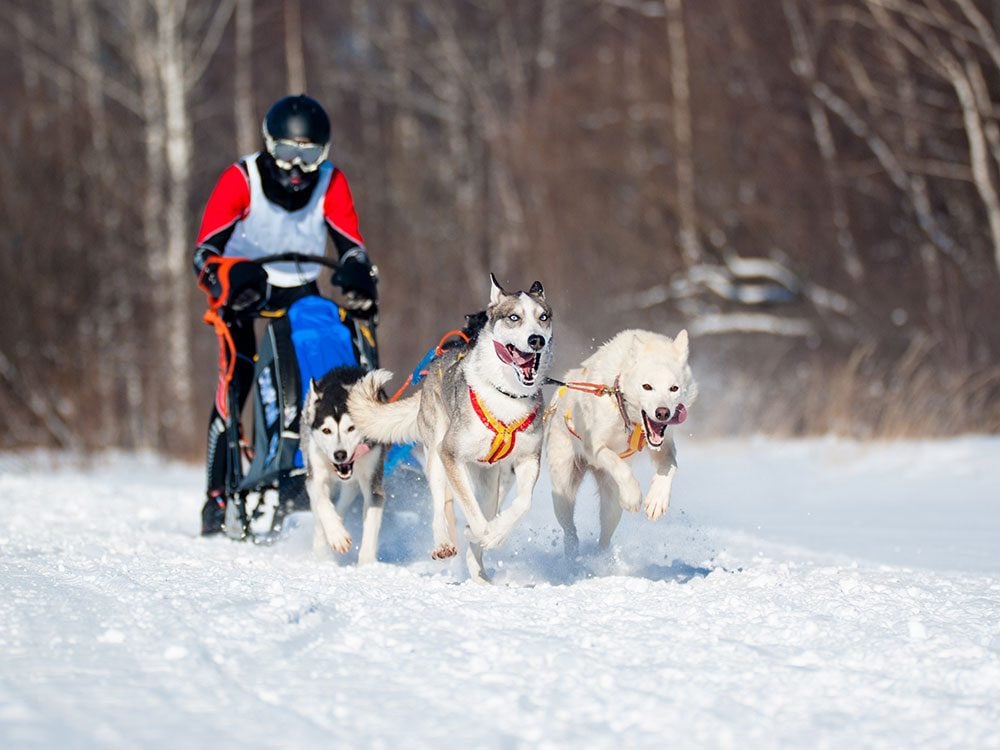
Go Dogsledding in Yukon
Frank Turner is a Yukon Quest legend, having competed in 23 consecutive races. The 120 dogs that make up his Muktuk Adventures kennels are as good-natured as pets, relishing the challenge and the opportunity to lead visitors into the snow-covered wonderland outside of Whitehorse. Guiding your team across a frozen lake, you’ll quickly learn that dogsledding is about teamwork, respect and relationships.
For one northern traveller, this attraction was the best part of the Yukon.
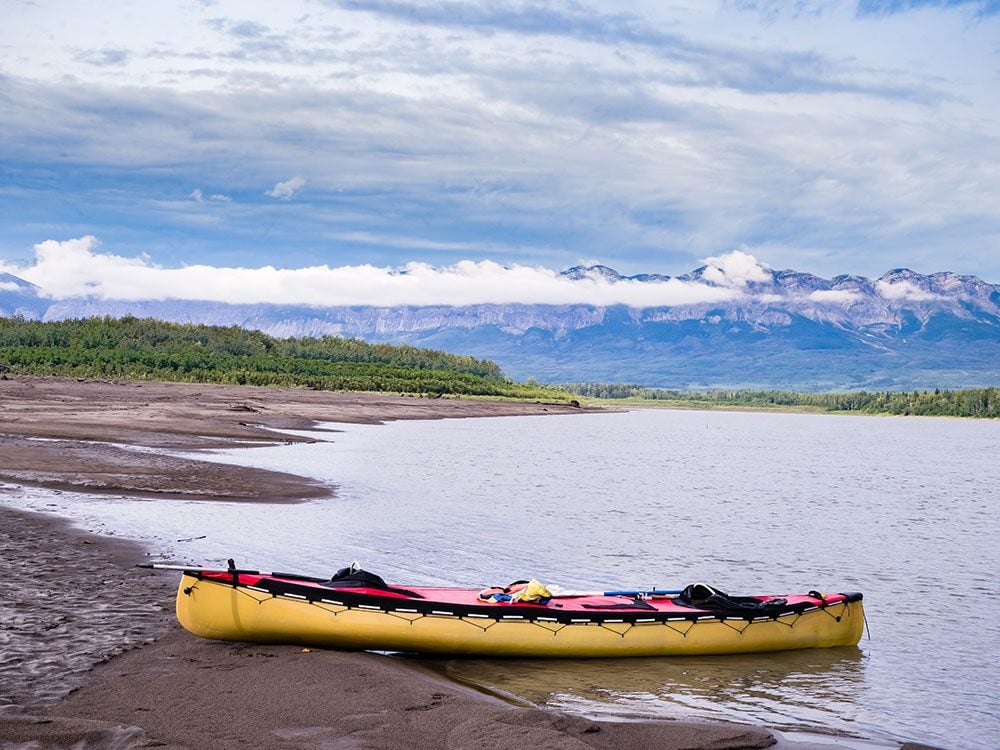
Canoe the Liard River in Yukon
The fast-flowing Liard River is ideal for newbie paddlers in search of an iconic waterway adventure. With no serious rapids or energy-sucking portages, navigating the Liard’s clear waters and gravel bars is easy. Along the way, there are excellent opportunities for wilderness camping, wildlife viewing and fishing. Trips typically depart by float plane from Whitehorse and conclude with a drive back to the capital.
Read the incredible story of two adventurous travellers who took a canoe trip through the Canadian Arctic.
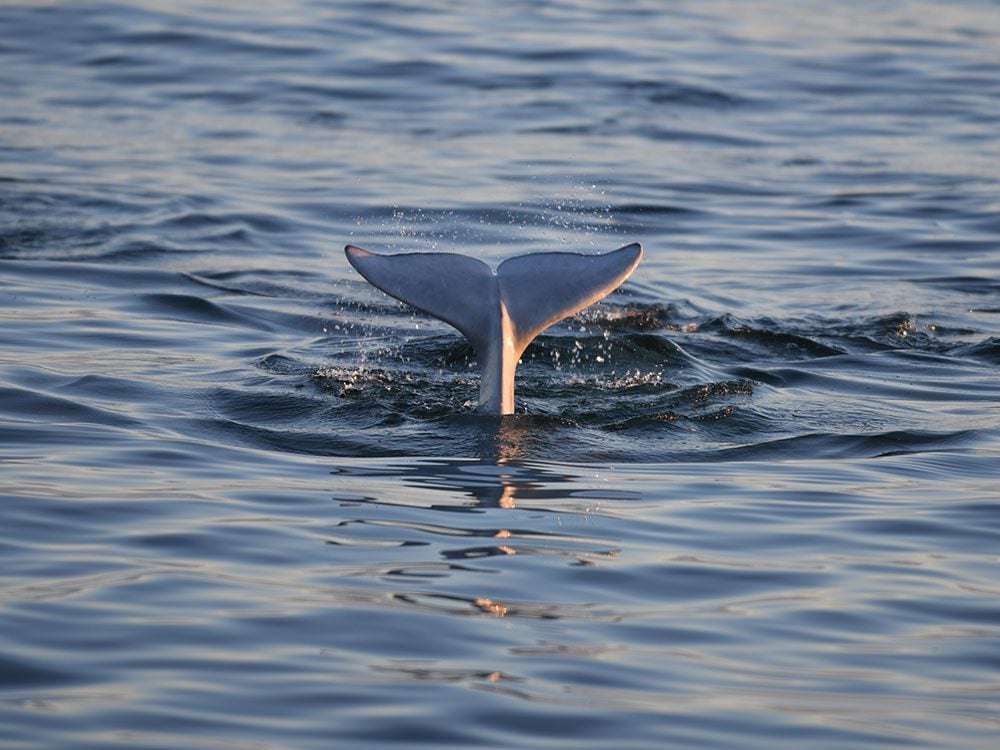
Visit the Arctic Watch Lodge in Nunavut
Eight hundred kilometres north of the Arctic Circle sits the world’s most northerly eco-lodge, owned and operated by Weber Arctic. Guests venture to Somerset Island each summer to hike the tundra, explore ancient Thule sites, ATV along the coast and marvel at the star attraction: thousands of beluga whales that congregate at the mouth of the nearby Cunningham River. Guests enjoy gourmet meals, sleep in special tents beneath the midnight sun and are guided on daily expeditions.
For more on Robin Esrock’s extensive travels through the Great White North, check out The Great Canadian Bucket List: One-of-a-Kind Travel Experiences.
Next, check out the 10 places in Canada every Canadian needs to visit.